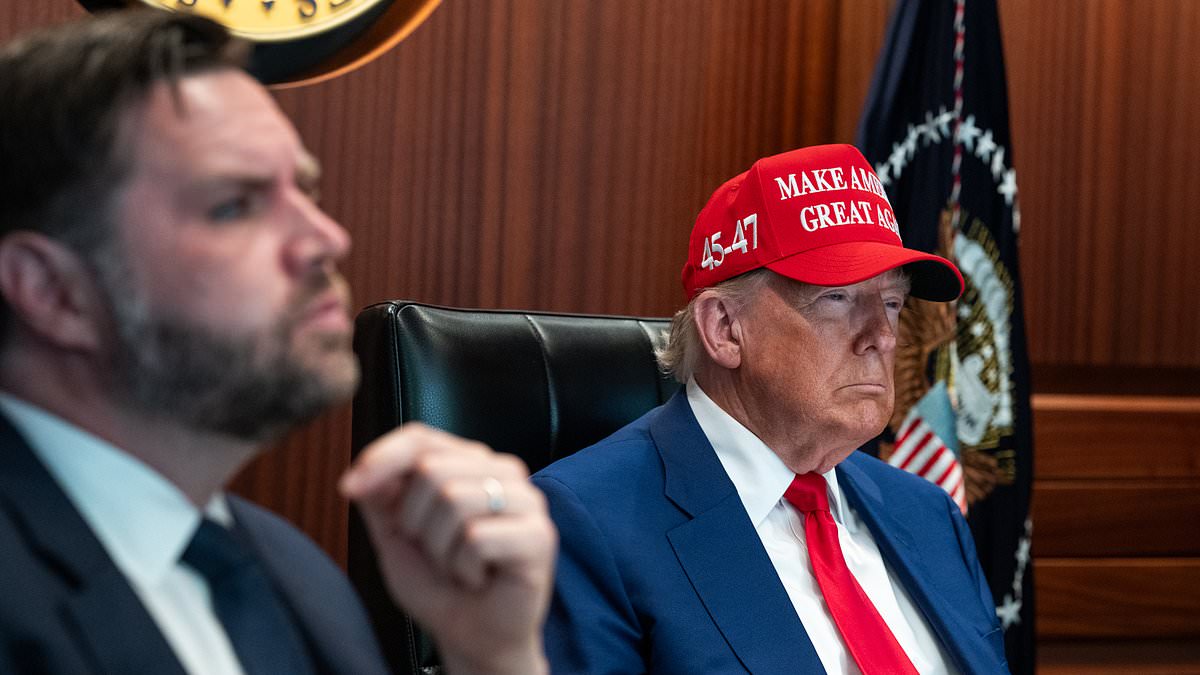On Sunday, US President Donald Trump claimed to have taken the bomb ‘right out of Iran’s hands’. But this startling image suggests Iran may just have smuggled it out from under his nose.
The satellite image – published by US defence contractor Maxar Technologies – shows 16 trucks leaving Iran’s Fordow nuclear facility on June 19, three days before Operation Midnight Hammer: the American bombing campaign that struck three of Iran’s largest nuclear facilities.
Further images reveal a flurry of activity at Fordow prior to the trucks’ departure involving bulldozers and security convoys. So what on earth was Iran up to and what is in those trucks? The answer will likely dictate what happens in the weeks to come of this war.
Ali Shamkhani, senior adviser to Iran’s supreme leader Ali Khamenei, revealed on X: ‘Even if nuclear sites are destroyed, [the] game isn’t over… Enriched materials, indigenous knowledge, political will remain.’
If Shamkhani and other Iranian sources are to be believed, the trucks were loaded with 408kg of 60 per cent enriched uranium, not far from the 90 per cent purity required to be considered ‘weapons grade’.
Each truck could easily carry 80kg of uranium. In other words, 16 trucks is ample to remove all of Iran’s enriched metal and still have room for other vital nuclear components including computer hardware and the enormous steel cylinders – built to withstand significant changes in temperature and pressure – in which uranium is stored and transported in powder form.
If those trucks did remove Iran’s stockpiles, then where is the uranium now, and – perhaps more importantly – what does Iran’s increasingly desperate leader plan to do with it?
The satellite that took this remarkable image would have been unable to follow the trucks. Either it would have had its camera fixed on the site, or – more likely – it would have been filming set co-ordinates related to its orbit around the earth. In other words, the moment the trucks pulled out of Fordow, the satellite lost visuals.
Iran would have known that Israeli and US intelligence were aware of their activity so the trucks themselves would almost certainly have dispersed, making them more difficult to track, while also using diversion tactics such as doubling back and driving through areas with heavy traffic.
It is unlikely the trucks will have gone to any of any of the mullahs’ other known nuclear facilities. The Islamic Republic would have known that any impending US strike would have targeted multiple facilities, and, indeed, US B-2 stealth bombers and cruise missiles struck not only Fordow but the Natanz and Isfahan sites as well.
But could Iran have further – hitherto unknown – nuclear facilities?
It would not be alone if so. Pakistan and North Korea both covertly developed a nuclear bomb while apparently under tight US surveillance.
The Islamic Republic has always claimed its nuclear programme is entirely for civilian purposes, notably renewable energy production. But it is entirely plausible that the theocratic regime has developed secretive laboratories with sophisticated centrifuges to quickly enrich uranium and develop it into a weapons-grade nuclear bomb.
If this is true, then it could be just weeks before the Ayatollah launches a bomb aimed towards Israel – or even US and UK bases in the Middle East.
This is, by far, the most alarming scenario. However, let’s be clear, it is not the most likely.
I would personally hedge that the smuggled uranium from Fordow has been dispersed across a number of pre-existing civilian industrial sites – such as telecoms facilities or some of Iran’s enormous hydrocarbon plants – where it can be covertly stored without raising suspicion.
No doubt, the regime will have elected sites within major cities. Although Israel has shown itself to be unmoved by civilian casualties, the US is unlikely to drop tomahawk bombs on a major city such as the sprawling capital of Tehran, home to more than 10million people.
Thankfully, however, these pre-existing industrial sites – although effective for covert storage – are unsuitable for building a bomb. This is because the centrifuges required to enrich uranium are highly sensitive and would be extremely difficult to transport in working shape, certainly not to cities under aerial bombardment.
While Iran may well have had up to 3,000 centrifuges across its three primary nuclear sites, they are likely to have been partially destroyed and buried deep beneath the rubble thrown up by US bunker-buster bombs.
That, of course, is assuming that Israeli intelligence services are still struggling to track down the trucks. Mossad is often cited as one of the most sophisticated intelligence agencies in the world, targeting Iranian commanders with razor-sharp precision when it launched its first strike on the country earlier this month. Despite officials’ silence, the hunt for the missing uranium may already be over.
But that’s not to say the threat is any weaker. When Saddam Hussein vowed to give up his WMD infrastructure in 1995, he did so fully aware that he had the institutional knowledge to resume his WMD programme in due course. Iran will likely be doing the same, safe in the knowledge that China and Russia will veto any UN attempts to initiate an inspectorate on the ground in Iran in the coming years.
The major difference is that, unlike Saddam’s Iraq, Iran knows America has no appetite for a land invasion. If the mullahs can weather the bombs being dropped from the sky, their nuclear dream remains within reach.
With typical bravado, President Trump told reporters that Operation Midnight Hammer had been a ‘spectacular success’ and a historic display of US military might. ‘Key nuclear enrichment facilities have been completely and totally obliterated,’ he announced.
This may well be the case. But enrichment facilities are only one part of the puzzle. Iran is a wounded beast but still possesses the scientific know-how and a greater motive than ever to build a bomb. The threat is not dead yet.
